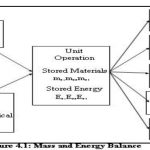Most of the literature on problem solving views a “problem” as a gap between some initial information (the initial state or problem statement) and the desired information (the final state or the answer to the problem). Problem solving is the activity of finding a path between these two states. You will find as you go through this book that routine substitution of data into an appropriate equation will not be adequate to solve material (and later energy) balances other than the most trivial ones. You can, of course, formulate your own strategy for solving problems—everyone has a different viewpoint. But adoption of the well-tested general strategy presented in this chapter has been found to significantly ease the difficulty students have when they encounter problems that are not exactly the same as those presented as examples and homework in this book, for example, problems in industrial practice. After all, the problems in this book are only samples, and simple ones at that, of the myriad problems that exist or could be formulated. Even if you pick your individual problem-solving technique, you will find the following steps to be a handy check on your work and a help if you get stuck.
An orderly method of analyzing problems and presenting their solutions represents training in logical thinking that is of considerably greater value than the mere knowledge of how to solve a particular type of problem. Understanding how to approach these problems from a logical viewpoint will help you to develop those fundamentals of thinking that will assist you in your work as an engineer long after you have read this material. Keep in mind the old Chinese proverb:
None of the secrets of success will work unless you do. When solving problems, either academic or industrial, you should always use “engineering judgment” even though much of your training to date treats problems as an exact science (e.g., mathematics). For instance, suppose that it takes 1 man 10 days to build a brick wall; then 10 men can finish it in l day. Therefore, 240 men can finish the wall in 1 hr, 14,400 can do the job in 1 min, and with 864,000 men the wall will be up before a single brick is in place! Your password to success is to use some common sense in problem solving and always maintain a mental picture of the system that you are analyzing.
Do not allow a problem to become abstract and unrelated to physical behavior. You do not have to follow the steps in the following list in any particular sequence or formally employ every one of them. You can go back several steps and repeat steps at will. You can consolidate steps. As you might expect, when you work on solving a problem, you will experience false starts, encounter extensive preliminary calculations, suspend work for higher-priority tasks, look for missing links, and make foolish mistakes. The strategy outlined here is designed to focus your attention on the main path rather than the detours


